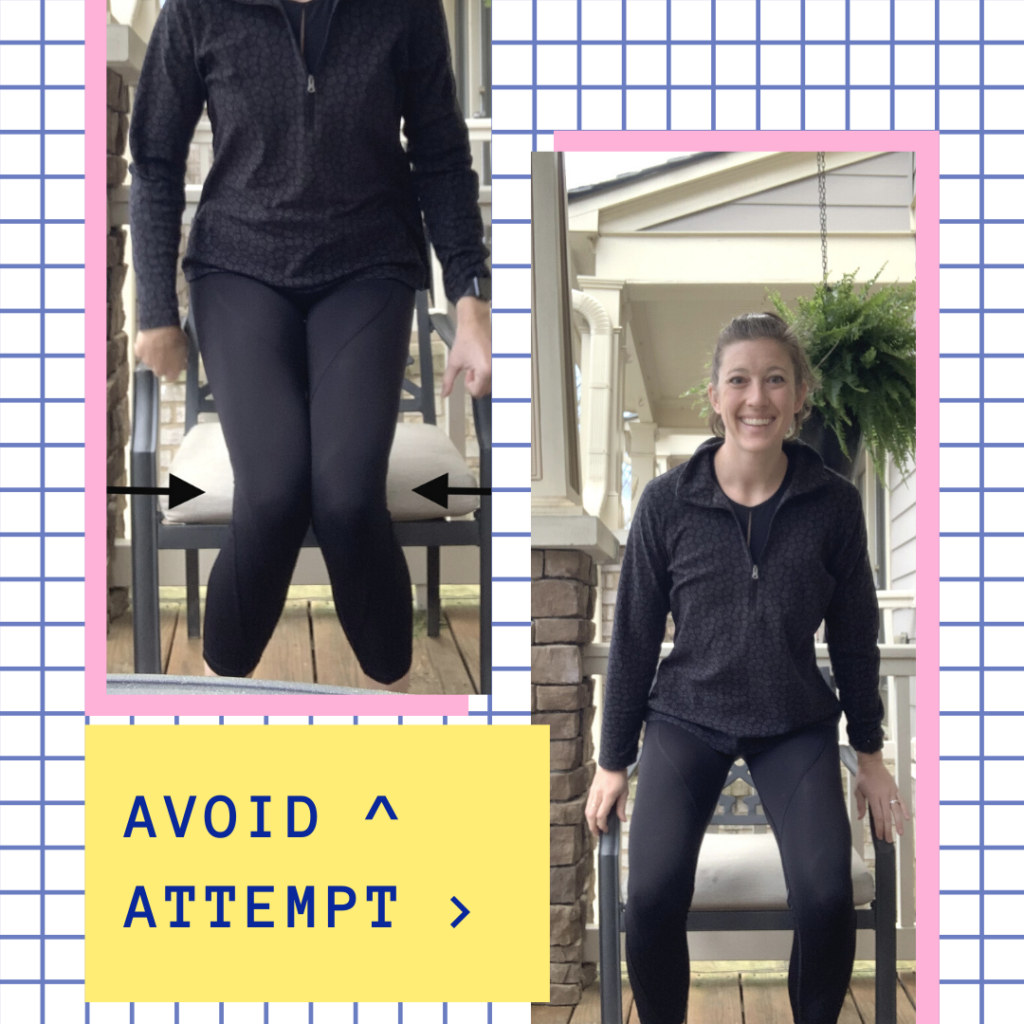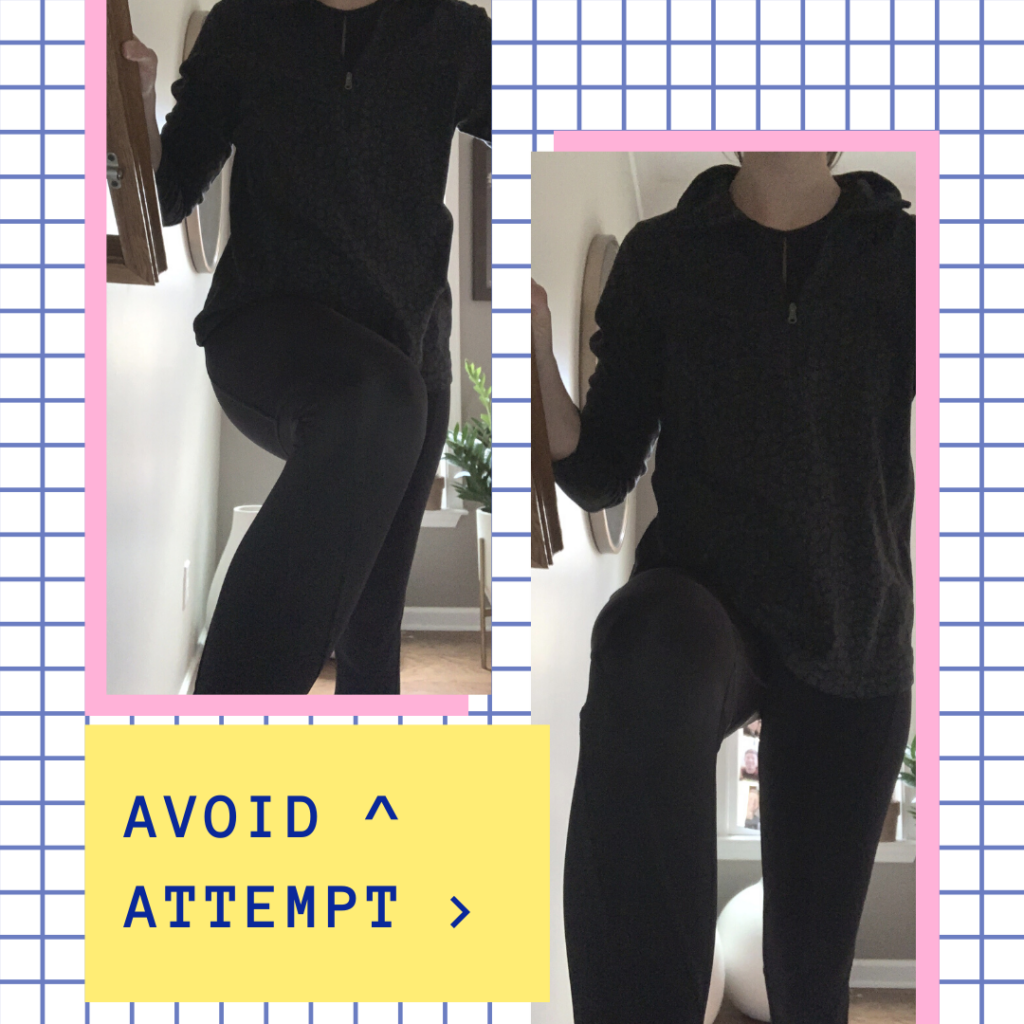Got Knee Pain? Try these 3 simple tips to reduce pain
Experiencing knee pain when standing up from a chair, walking up or down the stairs, or getting off the toilet? I get these complaints from patients frequently and would love to share a few simple things you can start implementing at home to help alleviate knee pain.
Tip #1: Start paying attention to your knee position in relation to your hip and ankle to reduce knee pain
The most common movement pattern I see in people with complaints of knee pain is genu valgus. This means having your knee come inwards during functional tasks. Sometimes this occurs because of the composition of our bony structures. However, most of the time it is due to weakness in the hip musculature. “So what do I do about this,” you ask? Start by paying attention to your lower extremity alignment when doing the tasks that increase your pain. Pictured below is an example of genu valgus (which increases the stress through the knee joint) and the other picture shows the alignment I want you to have (gently press your knee outward).
Tip 2#: Strengthening your legs to reduce knee pain!
The muscles that stabilize your hips are actually very important in stabilizing your knee and even your ankle. The knee mainly moves in one plane of motion, flexion/extension (bending and straightening). When the hip muscles do not do their job fully, it can lead to increased genu valgus at the knee (which was addressed in the first tip). Also the muscles that cross your knee joint are important in helping to support the knee as well. Here are a few simple, but effective exercises to do at home. Aim for once a day or every other day. Remember it takes some time to build muscle so be patient with yourself if you don’t immediately feel better or if you can only do a few repetitions.
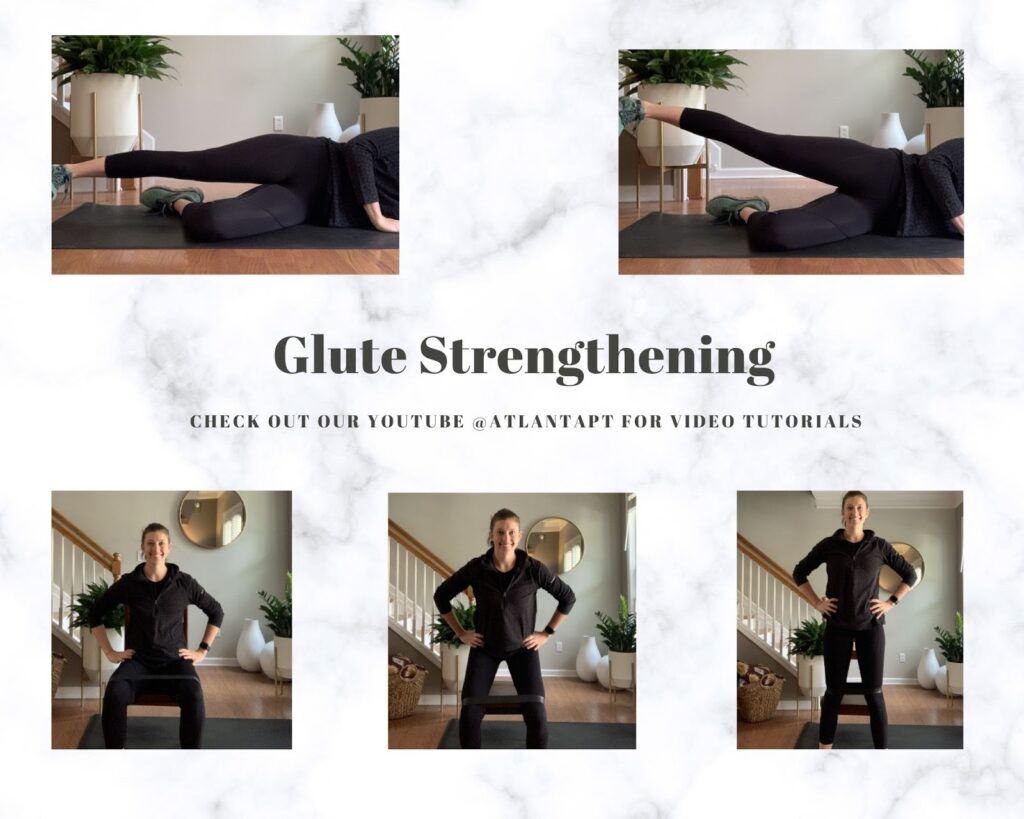
Tip #3: Self release for trigger points in muscles
Sometimes pain is caused because muscles get “knots” which limit the amount of oxygen able to get to the tissue and may lead to pain. Manual therapy interventions are an effective way to help release muscle tension. This can include self- release with balls or foam rollers, or in person with a physical therapist. Start with the hamstrings, quadriceps, glutes, adductors, and calves. Check out our Youtube for tutorials on how to roll these areas. If you do not have a foam roller, dough roller, lacrosse ball, or tennis ball; you can use your hands or stop by Atlanta PT to buy a foam roller.
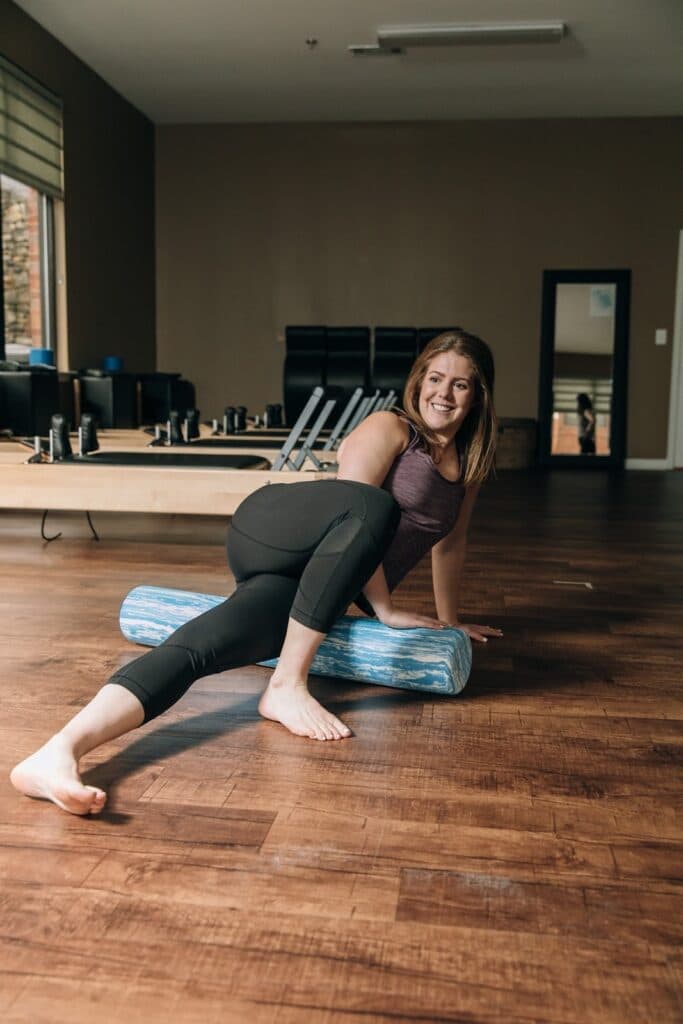
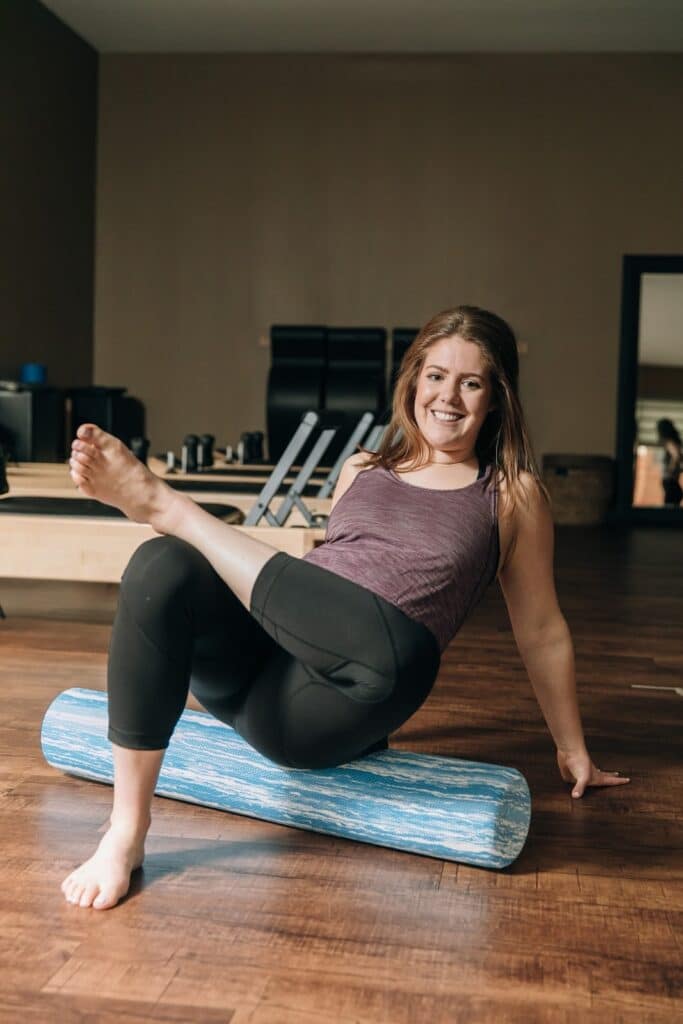
Of course there are many reasons why your knee is hurting and these tips may not fix the problem, so if you continue to experience pain call and make an appointment with a Doctor of Physical Therapy today.

